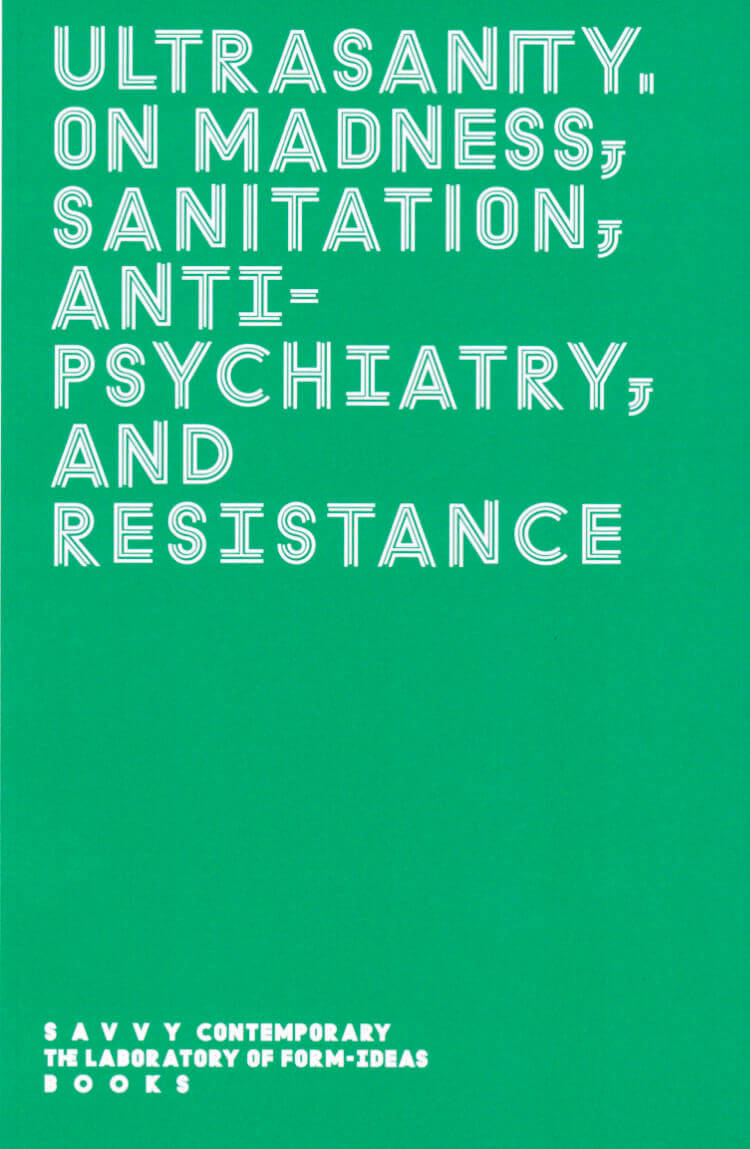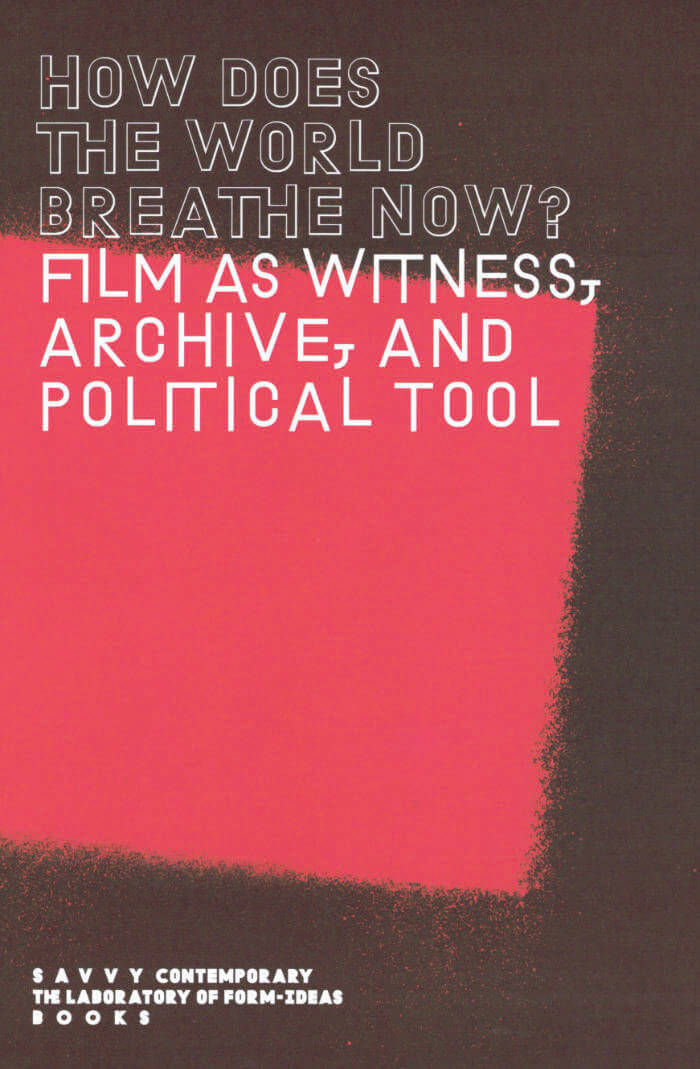Elena Agudio
Elena Agudio

I Will Draw a Map of What You Never See – Endeavours in Rhythmanalysis
Bonaventure Soh Bejeng Ndikung, Saskia Köbschall and 2 more
A multidisciplinary investigation of the interrelations of space and time, memory, architecture and urban planning through and beyond Henri Lefebvre's concept of Rhythmanalysis.
“The whole universe revolves around rhythm, and when we get out of rhythm, that's when we get into trouble.”—Babatunde Olatunji
A gathering of the echoes, memories and findings after three years of research, performances, exhibitions and conversations within “That, Around Which The Universe Revolves. On Rhythmanalysis of Memory, Times, Bodies in Space”. With chapters in Lagos, Düsseldorf, Harare, Hamburg and Berlin, the S A V V Y Contemporary project and publication bring together visual artists, urbanists, writers, photographers, performers, poets, and theorists to investigate the interrelations of space and time, memory, architecture and urban planning through and beyond Henri Lefebvre's concept of Rhythmanalysis.
Published following the exhibition project “That, Around Which The Universe Revolves. On Rhythmanalysis of Memory, Times, Bodies in Space”, SAVVY Contemporary, Berlin, from December 1st, 2017, to January 28, 2018.
Edited by Elena Agudio, Anna Jäger, Saskia Köbschall, Bonaventure Soh Bejeng Ndikung.
Contributions by Akinbode Akinbiyi, Jacques Coursil, Thulile Gamezde, Gintersdorfer/Klaßen, Noa Ha, Hebbel am Ufer Berlin (Annemie Vanackere & Ricardo Carmona), Kampnagel Hamburg (Caroline Spellenberg), Jan Lemitz, Dorothee Munyaneza, Lucia Nhamo, Christian Nyampeta, Qudus Onikeku, Tracey Rose, Louis Henri Seukwa, AbdouMaliq Simone, Awilda Sterling, Greg Tate, Kathrin Tiedemann, Trinh T. Minh-ha, Tinofireyi Zhou, Percy Zvomuya.

Whose Land Have I Lit on Now? – Contemplations on the Notions of Hospitality
Elena Agudio, Bonaventure Soh Bejeng Ndikung and 1 more
A curatorial project about concepts of hospitality and the triggers of hostility in hospitality.
The unlikely seemed possible in the summer of 2015, as thousands of immigrants from mostly Syria made their way to Germany and Angela Merkel made the statement "Wir schaffen das" (We can do it/ we can cope with it). A German's venture into open hospitality was being witnessed as the country celebrated its newfound "Willkommenskultur." Soon enough, however, the summer of grace became the autumn of rage and the winter of nightmares, as the initial goodwill turned into the resurgence of the extreme right in Germany. Much is happen- ing today that calls for a reflection on hospitality in Germany, in Europe, and in the world at large. Taking as a point of departure Derrida's notion of "hostipitality" – that is the presence of hostility in all hospitality and hosting–this anthology brings together original contributions from artists, scholars, activists, poets, curators, and musicians who reflect on different experi- ences and notions of hospitality.
In an age of flourishing resentments and antipathy towards all that seems conceptually or physically "strange"/ a "stranger," in a time when the historical violence of the guest (as a colonizer) over the host is reiterated and fortified; in an era that has turned hospitality into a neoliberal commodity, it becomes urgent to reconsider hospitality's gradients of power.
Contributions by Elena Agudio,Mohamed Amjahid, Ulf Aminde, Arjun Appadurai, Federica Bueti, Ibrahim Arslan, Joshua Chambers-letson, Bilgin Ayata, Jill Denton, Jihan El-tahri, Denise Ferreira Da Silva, Seloua Luste Boulbina, Raisa Galofre, Lionel Manga, Peter Morin, Massimo Perinelli, Naeem Mohaiemen, Miriam Schickler, Farkhondeh Shahroudi, Safiya Sinclair, Bonaventure Soh Bejeng Ndikung, Denise Ryner, Margarita Tsomou, Tania Willard.

Ultrasanity – On Madness, Sanitation, Antipsychiatry, and Resistance
Kelly Krugman, Elena Agudio and 1 more
A curatorial and research project that aims to move beyond insanity as the opposite of sanity, and imagine a space beyond what is understood as sane, i.e. ultrasanity—not a romanticization of madness or mental illness, but an effort to reconsider and challenge the notion of madness and the stigmas labelled on the so-called mad.
This publication unfolds as a collection of words, works, and images that informed, incited, and embodied SAVVY Contemporary's project Ultrasanity. On Madness, Sanitation, Antipsychiatry, and Resistance, an exhibition and research project on the elasticity of sanity.
It doesn't materialise simply as a catalogue of the exhibition but as a book retracing the trajectory of a research, as an occasion to extend SAVVY's curatorial proposition into a further choral perspective. With it we aim to deepen some of the reflections that moved and agitated us through two years of researches, conversations, programming, and practicing of Ultrasanity. The cogitations and the confrontations, the movements and the sounds, the trials and the tribulations, that accompanied us through the project and its 4 chapters and iterations are here collected to resonate one to each other, and to open new trajectories and paths.
Contributions by Hortensia Völckers, Kirsten Ha, Alya Sebti, Inka Gressel, Joerg Fingerhut, Ana Gómez-Carillo, Bonaventure Soh Bejeng Ndikung, Elena Agudio, Frederick W. Hickling, Debbie-Ann Chambers, Jaswant Guzder, The Brother Moves On, Jota Mombaça, Ghayath Almadhoun, Dora García, Monica Greco, Sajdeep Soomal, Ayesha Hameed, Jaswant Guzder, Johan Lagae, Sofie Boonen, Maarten Liefooghe, Mpho Matsipa, Dorothee Munyaneza.
And more

How Does The World Breathe Now? – Film as Witness, Archive, and Political Tool
Eirini Fountedaki, Pia Chakraverti-Würthwein
How film may be a constructive tool to examine the state of the world and its cruelties, and how to form a more stable and supportive culture of film production and distribution.
Out of frustration and exasperation with the state of the world in 1960, Indonesian poet Willibrordus Surendra Broto Rendra asked himself: "How does the world breathe now?"
The film series conceived of by SAVVY Contemporary, which ran from September 2016 through March 2018, was a response to our own dismay at the continued injustices that the world faces. Each week SAVVY invited a different speaker who would choose a film that she or he felt answered, or asked more questions of, the question, "how does the world breathe now?" More than just a series of screenings, the film series became a kind of ciné-club where we also ate, drank, and danced together, and out of which new concepts, collaborations, and polemics emerged. With this publication we hope to offer readers another mode of thinking about films, and to pick up on some loose threads or unfinished conversations of the film series.
Over the course of the publication's three sections: Bearing Witness: old & new filmic practices with political clout; Archiving, Preserving, and Accessing Film; and New Relationships, New Practices: Towards sustainable & ethical filmmaking, SAVVY brings together the voices of contributors such as Sarah Maldoror, Filippos Koutsaftis, the Spotters of the TRIBUNAL "Unraveling the NSU Complex," Stefanie Schulte Strathaus, Talal Afifi and Viola Shafik, the *foundationClass, and Olivier Marboeuf, among others. Together, we explore how film may be a constructive tool to examine the state of the world and its cruelties, and we ponder how to form a more stable and supportive culture of film production and distribution.
Contributions by Talal Afifi, Elena Agudio, Antonia Alampi, Ana Alenso, Alexander Apóstol, Iván Candeo, Pia Chakraverti-Würthwein, Haris Epaminonda, Eirini Fountedaki, Filippos Koutsaftis, Lal Laleş, Nikola Madzirov, Sarah Maldoror, Olivier Marboeuf, Marco Montiel-Soto, Bonaventure Soh Bejeng Ndikung, Erika Ordosgoitti, Rolando Peña, Franziska Pierwoss & Siska, Carlos Rebolledo, Stefanie Schulte Strathaus, Viola Shafik, Spotters.

We Have Delivered Ourselves From the Tonal – Of, Towards, On, For Julius Eastman
A collection of essays, librettos, lyrics, memories, photos, personal anecdotes by musicians, visual artists, researchers and archivers that pays homage to the work and life of African-American composer, musician, performer, activist Julius Eastman.
The book investigates his legacy beyond the predominantly Western musicological format of the tonal or harmonic and the framework of what is today understood as minimalist music. By trying to complicate, deny or expatiate on the notions of the harmonic, tonal hierarchy, the triadic, or even the tonal centre, Eastman's compositions explore strategies and technologies of attaining the atonal. One might be tempted to see Eastman in the legacy of Bartok, Schoenberg, Berg and others, but here too, it is worth shifting the geography of minimal tendencies and minimalism in music. It is worth listening and reading Eastman's music within the scope of what Oluwaseyi Kehinde describes as the application of chromatic forms such as polytonality, atonality, dissonance as the fulcrum in analysing some elements of African music such as melody, harmony, instruments and instrumentation. This publication constructs a non-linear genealogy of Eastman's practice and his cultural, political and social relevance, while situating his work within a broader rhizomatic relation of musical epistemologies and practices.
Julius Eastman (1940-1990) was an American composer, pianist, vocalist, and dancer whose work fell under minimalism. He was among the first composers to combine minimalist processes with elements of pop music.
Contributions by Talal Afifi, Elena Agudio, Antonia Alampi, Ana Alenso, Alexander Apóstol, Iván Candeo, Pia Chakraverti-Würthwein, Haris Epaminonda, Eirini Fountedaki, Filippos Koutsaftis, Lal Laleş, Nikola Madzirov, Sarah Maldoror, Olivier Marboeuf, Marco Montiel-Soto, Bonaventure Soh Bejeng Ndikung, Erika Ordosgoitti, Rolando Peña, Franziska Pierwoss & Siska, Carlos Rebolledo, Stefanie Schulte Strathaus, Viola Shafik, Spotters.